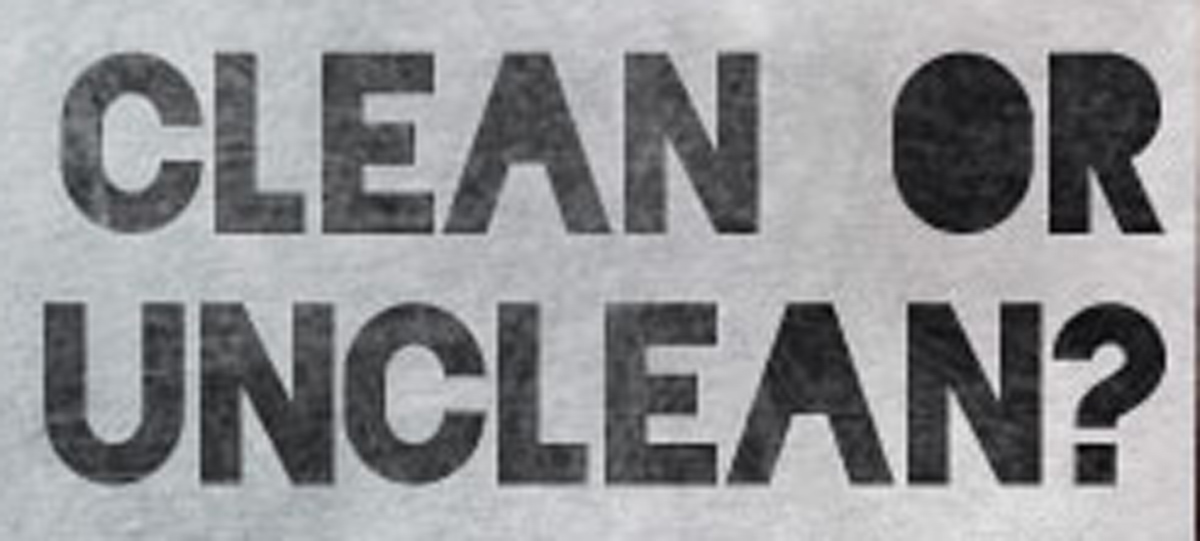The Clean for the Unclean
I have always been amazed at the way in which the healing accounts in the Gospels reflect something of the compassion and the power of Jesus; but even more than that, I have often wondered at the fact that it actually cost Jesus so much more than we realize at first in order for Him to make ceremonially unclean individuals clean again. As the Son of God, Jesus lacked no power to cleanse a leper or the woman with the flow of blood; but as true man and as an Israelite it was exceedingly costly. The law of God had forbidden the touching of a leper. In many cases of blood laws and bodily discharges the same was true. Once an Israelite was unclean they could no longer go to the Temple and carrying out the worship rituals prescribed by God. So how could Jesus touch the leper or the woman with the flow of blood and not be made unclean? The simple answer is that He was made unclean–at the cross.
Sinclair Ferguson tells the story of a friend of his who had been converted out of a lifestyle of drug abuse and rebellion. In recounting the story, Ferguson noted that his friend would often say, “For something dirty to become clean something must become dirty–and that’s the Gospel.” Someone clean became unclean so that those who were unclean might be cleansed. Jesus healed a leper by touching him, He healed the woman with the flow of blood when she touched the hem of His garment, and He raised a dead girl to life by taking her by the hand. All of these acts made Him ceremonially unclean, and all of these acts represented His being made unclean on the cross. He was treated as a spiritual leper at Calvary. On the cross, He took the unstoppable flow of blood; and, he subjected Himself to death on the tree. He was made sin for us that we might become the righteousness of God in Him.
Herman Ridderbos explained this element of Christ’s saving work in His reflections on the fulfillment of Isaiah 53:4, as it is quoted in the Gospel of Matthew, when he wrote:
Jesus’ suffering “has a much deeper foundation in the gospel than can be established on the ground of the pronouncements that mention it explicitely. The messianic salvation revealed in Christ’s coming is not exclusively founded in His authority and supernatural glory, but also in His humiliation and rejection. The whole of the Gospel of the Kingdom must also be qualified as the gospel of the cross, not only on account of Jesus’ deliberate pronouncements about His suffering, but also because of the modality of the whole of his messianic self-revelation…
Especially noteworthy is the agreement between Jesus’ via dolorosa and the prophecy of the suffering Servant of the Lord in Isaiah 53. Even before this suffering started, this agreement became visible…It is important that in Matthew 8:16-17 Jesus’ manifold cures are called the fulfillment of the prophecy of Isaiah 53:4: “He hath borne our griefs and carried our sorrows.” Here we find the thought that in His messianic work, Jesus takes over the burden of disease and suffering from men. It is true that in this passage Jesus does not appear as the one who takes this burden on Himself in His suffering (as does the Servant of the LORD in Isaiah 53:4). But the thought of such a transfer is clearly present and is explained in the light of the prophecy of Isaiah 53. ” – RidderbosThe Coming of the Kingdom pp. 164-165
By virtue of the relationship between sin and sickness (through Adam’s rebellion), and the fact that the Scriptures explicitly tell us that He “who knew no sin was made sin for us,” and that God substituted “the just for the unjust,” we may rightly also affirm that “the clean was made unclean so that the unclean might be made clean.”




Pingback : The Miracle-Working Second Adam - Feeding on Christ
I must say that this is most biblical and boldly Christ-honoring material. And it is necessary food for my hungry soul.